

Given that the seven ancient wonders of the world had all disappeared, aside from the Great Pyramid of Giza, it was time to name the seven new wonders of the world. That was done in 2007, thanks to a huge worldwide vote organised by the New7Wonders Foundation. Without further ado, here’s the list of wonders. For those who’re interested, we’ll tell you more about this selection at the end of the article.
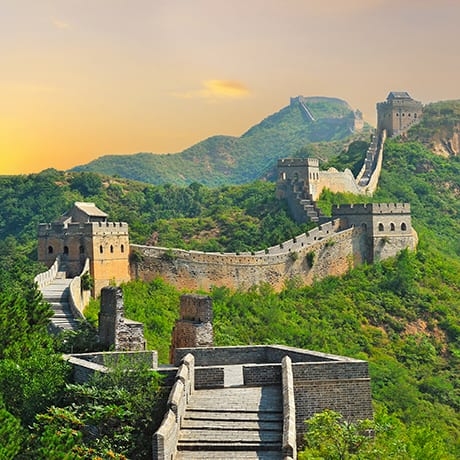

The Great Wall of China at sunset
This defensive wall in northern China is 20,000 km long, has an average height of seven metres, and was built between the 3rd and 17th centuries. It covers extremely varied landscapes, from lush mountains around Beijing, to desert corridors at the Jiayu Pass… The most touristy part of the wall gets 70,000 visitors per day in peak season. To tell the truth, astronauts can’t actually see it with the naked eye from the window of their space station. Yeah, that’s a myth! The wall isn’t perfectly continuous either, but instead made up of several sections.
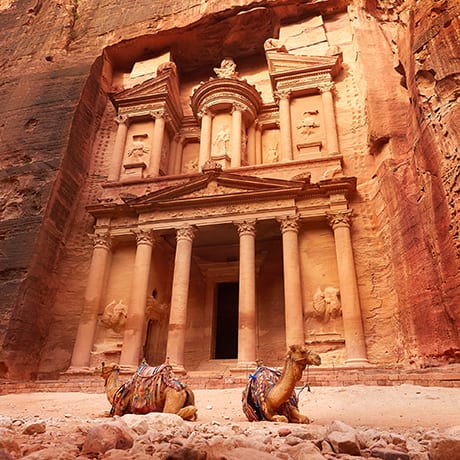

Petra, an archaeological city in Jordan
Petra is a major archaeological site. A city was built there during antiquity in the 8th century B.C. and then occupied by the Nabataeans around the 6th century. It was abandoned and then fell into oblivion and was eventually rediscovered by a Swiss explorer in 1812.
The exceptional value of Petra lies in its monumental facades carved directly into the rock. The architecture reflects a mixture of oriental and Greek influences. It also has an incredible access route through a magnificent 1.5 km long canyon that’s only two metres wide at its narrowest point. And, of course, the site is of great historical interest.
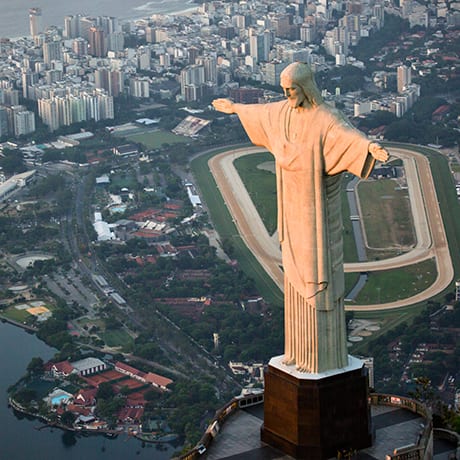

Christ the Redeemer
Christ the Redeemer is a statue located at the top of Mount Corcovado in Rio de Janeiro in Brazil and was erected in 1931. It’s 30 metres high and boasts an arm span of 28 metres, which makes it one of the biggest statues in the world.
Its beauty, its size and its location overhanging the city are impressive alone, but it’s even more impressive when it’s struck by lightning, on average, six times a year.
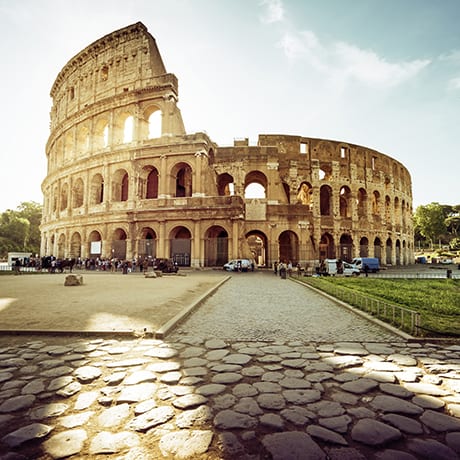

The large Colosseum in Rome
The Colosseum in Rome was built between 70 and 80 AD by more than 60,000 Jewish slaves. It’s the largest amphitheatre built by the Roman Empire.
It was a performance space where animal and gladiator fights, reenactments of famous battles, mythological dramas and even public executions took place. It could hold 50,000 spectators. More than 500,000 people are said to have died there and more than a million animals.
It stopped being used as a performance space from the Middle Ages. Nowadays, it’s in ruins, most notably due to earthquakes, but it continues to give an idea of the power the Roman Empire had at its peak.
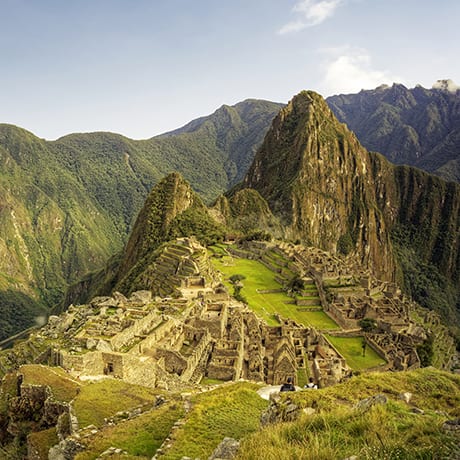

Machu Picchu
Machu Picchu is a mountain that houses the ruins of an ancient Inca city at an altitude of 2,483 metres. It’s located about 100 kilometres from Cusco.
What makes Machu Picchu worthy of its place in the seven new wonders of the world is the beauty of the place and its mystery. The landscape that surrounds it is often foggy. We don’t know much about the ruins. The nearest village is only accessible by an old train or on foot by following the rails from a power station.


The Mayan site of Chichen Itza in Mexico
Chichén Itzá is an ancient Mayan city located in Yucatán, Mexico. It was the capital of the whole region. The city dates back to at least the 8th century. It was in decline, but still inhabited at the time of the Spanish conquest in the 16th century.
There you can see the largest ball game field, several very peculiar water holes (cenotes) and the perfectly restored pyramid, “El Castillo”, which is used as a backdrop for nighttime light projections.
The Taj Mahal is a white marble funeral monument built by the Mughal emperor, Shah Jahan, in memory of his wife, Mumtaz Mahal. It’s located in the city of Arga, not far from Delhi. Its construction involved more than 20,000 people and was completed in 1648. It combines Islamic Iranian, Ottoman and Indian architectural influences.
The vote was organised by New7Wonders Foundation.
It’s a private initiative led by a Swiss businessman, Bernard Weber.
77 monuments were selected from the original list. 20 finalists were chosen by a jury composed of leading international architects and chaired by the director of UNESCO.
The winners were then chosen by the general public around the world. More than 100 million votes were cast.
The results were revealed in 2007 in Lisbon during a major ceremony.


The New7Wonders hot air balloon above the Taj Mahal
To have been made by a human. To have a remarkable cultural and artistic significance. The historical aspect and the technical feat were also taken into account.
The practicality of the monuments wasn’t part of the criteria.
All candidate monuments had to have been completed before 2000 and be in an “acceptable” state of conservation.
Egypt, apparently disgruntled to have to put its title back on the line, the Great Pyramid of Giza was excluded from the competition and presented as an honorary title only.
The system didn’t allow equal access to the vote, nor was there a fair distribution of votes according to their origin. Many more votes were cast from India, Mexico, China and Turkey than from other countries.
The origins of the list of the seven wonders of the ancient world is unknown. It probably dates back to the 2nd or 3rd century B.C. and comes from Ancient Greece. In history, numerous people have referred to it. Here it is:
The Great Pyramid of Giza is the only one that’s still standing today. All the others were destroyed by natural disasters (fires, earthquakes, etc.) or other causes…

